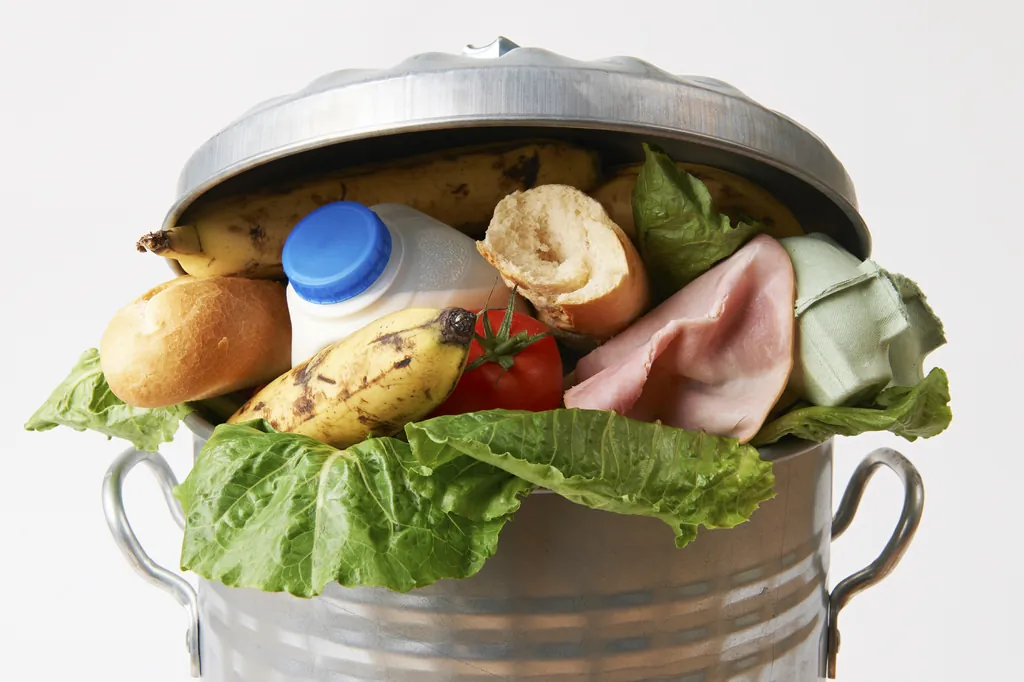Blog
Hungry for Change and Wasting Away: Food Waste in America
By Amanda Van Dall, Recent ASU Nutrition Student
Remnants. Refuse. Garbage. Food waste by any other name would smell just as sour. Two years ago, the impending nature of this issue, paired with the overpowering odor of the problem rising from overburdened landfills, incited action by our government. On September 16, 2015, the first national campaign against food loss was formed (2). This program, in conjunction with a social media-savvy Ad Council campaign, has an audacious goal to facilitate a 50 perfect reduction in food waste by 2030. Tangible steps in this process include (2):
- Create a sustainable recycling process of turning food waste into animal feed, compost, bioenergy, and/or natural fertilizers.
- Reduce the amount of food waste by linking potential food donors and relief organizations together.

Streamline the efficiency of product development, storage, shipping, marketing, transportation, and cooking methods.
By following the latter steps as part of a foundation for success, and by being diligent and working diligently, this campaign aims to decrease these disturbing realities about national food waste (2):
- Based on USDA research, up to 30-40 percent of our food supply will deteriorate into food waste. Using figures from 2010, this translates into a loss of 133 billion pounds of lost food and a net economic loss of $161 billion dollars (including labor, resources, etc).
- The labor, resources, energy, and land used to create these wasted products detracts from projects which would be more beneficial to society while simultaneously damaging the environment.
- The final chapter in this tragic tale of food waste does not end when the mold begins. Instead, wasted food reaches a new nadir as a chemical component of methane gas, other greenhouse gases, and additional pollutants from landfills.
- The inefficiency of the food production process also hits people where they are most vulnerable: their wallets. When food waste is a rampant problem, increasing food costs also becomes a problem.
- Most importantly, vulnerable citizens are unnecessarily suffering from hunger in a society where the solution is readily available if the source of the problem is understood.
The problem is evident, but so is support for the solutions. Public support for this campaign is easy to garner. This is not solely due to selfish economic reasons. Preserving food for one’s vulnerable neighbors is close to home and far from national policies made in far-away cities. Even the most skeptical citizen who is wary of government programs wants to help his hungry locals in his hometown. Because, even the most nihilist citizens among us realize that we’re all in this process together. And none of us is getting out of here alive; therefore, the least we can do is help each other.
Ironically, the altruistic intention of hometown heroes and the good intentions of governments who pair with conglomerates both submit to the same flawed philosophy about the source of food waste and why it may not combat hunger. As Nick Saul brilliantly addresses in his Huffington Post article on food waste, a governmental campaign may reduce overall waste, yet it may not solve our hunger problem. As he eloquently states, “Hunger isn’t about a lack of food. It’s about a lack of income. People are food insecure because they can’t afford to eat (1).”
Any successful program must incorporate a holistic approach. Perhaps a prudent first step would be to incentivize corporations with tax credits. Other suggested solutions include penalizing the same corporations for waste by taxing them, while supporting programs (such as the one by the Ad Council) to educate citizens about reducing food waste in their own homes (1). With the recent surge in support for long-term sustainable practices and policies, we are given an important opportunity to permanently change our current flawed design into an efficient future system. Now is the time to work together to fight our most demanding problems and save our most vulnerable populations.
Sources:
- Saul, Nick. Stop Trying to Solve Hunger with Corporate Food Waste. Huffington Post Canada website. http://www.huffingtonpost.ca/nick-saul/food-waste-poverty_b_10327320.html. Published July 6, 2016. Accessed on October 15, 2017.
2. US Department of Agriculture. US Food Waste Challenge. United States Department of Agriculture website. https://www.usda.gov/oce/foodwaste/faqs.htm.
















